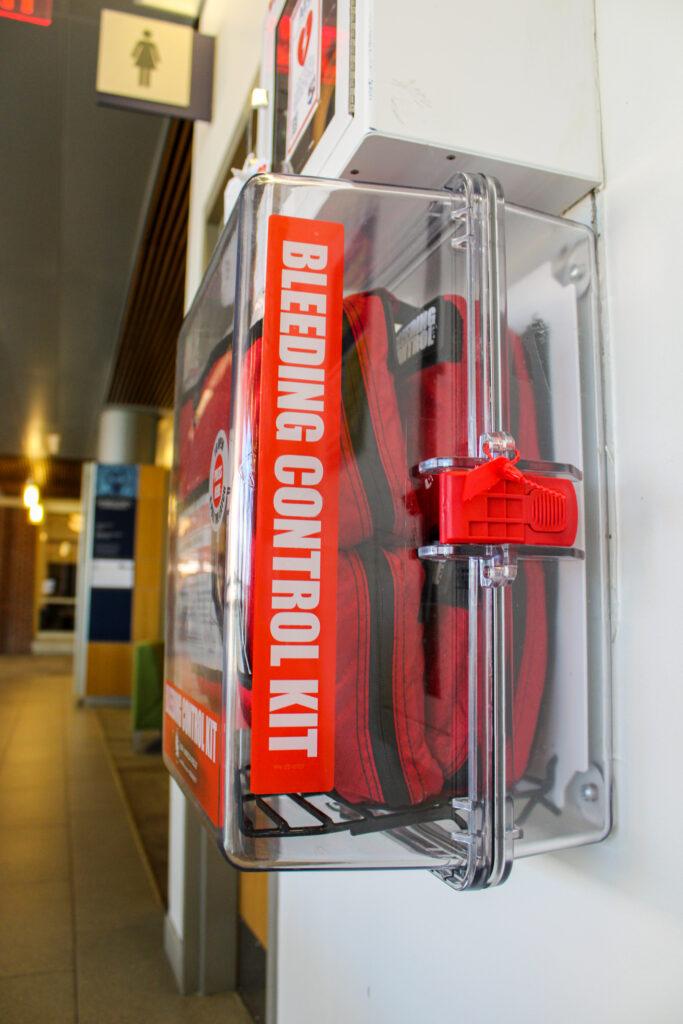CW: This article references/discusses gun violence. Please refer to the end of the article for on- and off-campus resources.
An emergency blood loss training program is being implemented in Washington, D.C. public schools (DCPS) for health and physical education teachers.
Stop the Bleed (STB), which is being rolled out in DCPS this year, is an interactive training program provided by the American College of Surgeons (ACS) that aims to teach individuals lifesaving techniques to stop fatal blood loss in the event of emergencies. While the program is currently limited to select teachers, high school students will also eventually participate and receive training. The program has prepared over 2.1 million people worldwide already to treat fatal blood loss in the event of an emergency.

Babak Sarani, chair of the ACS Committee on Trauma for Washington, D.C., believes this training will save many people in the District from preventable death.
“Bleeding is the most common cause of preventable death following most injuries,” Sarani wrote to The Hoya. “Therefore, we see the basic skills that STB teaches as something that all people should know. If you really think about it, the skills taught in STB are easier than CPR – which is now a common part of everyone’s vernacular.”
Teaching this program to students in the District will help residents be prepared to act in blood loss situations. In the District, 128 people die by guns in an average year. Gun violence costs the city around $2 billion, and D.C. has the highest gun homicide rate in the country.
The hour-long course aims to teach people life-saving techniques to stop excessive blood loss, while also ensuring the person rendering aid is not injured themself.
“The course consists of teaching people how to recognize bleeding and how to stop it through 3 simple steps: applying direct pressure (almost always this is all that is needed), packing a wound if it is deep, and applying a tourniquet if the bleeding is severe and cannot be controlled with pressure/packing,” Sarani wrote.
DCPS students are also required to participate in a mandatory CPR program prior to graduation, but Sarani said STB was added to the CPR requirement to expand the lifesaving skills that high school students already learn.
“The first step was training a sufficient number of DCPS teachers on STB and so the course that we just finished with them about 2 weeks ago was a train-the-trainer model where we certified about 30 or so DCPS teachers as STB teachers,” Sarani wrote. “These are the same people who teach the no-hands CPR. Because the STB curriculum and teaching materials are already set/created, rolling out the actual course to the students will be very easy.”
Nonetheless, the implementation of the program in DCPS has not been without its challenges.
“The biggest challenge was finding time to train the teachers. As you can imagine, the teachers’ time is very limited and getting everyone together at the same time for training was tricky,” Sarani said. “Luckily, DCPS was able to find time during the summer when teachers undergo a lot of in-service training in preparation for the upcoming school year.”
STB also initially struggled to get enough training materials for teachers. Since the program is outside of the DCPS budget cycle, DCPS did not budget to purchase teaching kits. Sarani said that the DC Committee on Trauma voted to use its own funds to put 180 teaching kits into school and ensure all graduating high school students are trained.
“The DC Committee on Trauma (COT) yesterday voted unanimously to use our own funds to put 180 teaching kits into the schools,” Sarani said. “This will be enough to make sure that all of the graduating high school students this year get trained at a ratio of 1 teacher per 4 students.”
DCPS Manager of K-12 Health Education Erin Lumpkins said she believes that the training is especially critical for children in D.C. to learn, given the city’s high rates of gun violence. According to the D.C. Policy Center, an average of 2,800 kids were nearby for each 2021 homicide in the District.
“Youth Risk Behavior Survey data shows that 10.5% of high school students in DC have been threatened or injured by a weapon,” Lumpkins wrote to The Hoya. “This demonstrates that there is a need to equip students with the skills to respond to bleeding injuries.”
Lumpkins believes that the training will enable students to respond confidently in emergency situations with these newfound skills.
“Individuals that have been trained to respond to emergencies are more likely to respond when the need arises,” Lumpkins wrote. “We have seen this trend for CPR/breathing emergencies and hope to see the same effect with bleeding injuries.”




















